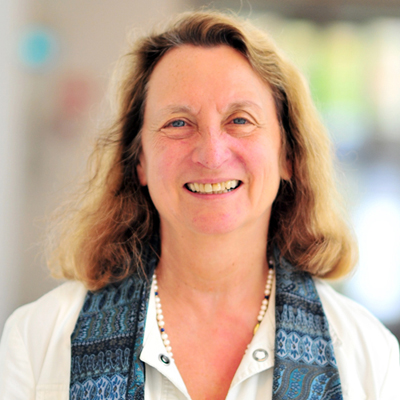Understanding combustion science to stop, control, and create explosions
Dr. Elaine Oran, at the University of Maryland, studies the theoretical and computational problems of physics and engineering involving natural, accidental, and controlled explosions. By understanding the fundamental science underlying combustion and explosion, Dr. Oran hopes to extend her insights that will help us avoid explosions in coal mines and fuel-storage plants, develop efficient, “clean” engines for high-speed flight, and understand supernovae and many other cosmic and terrestrial explosions. For example, in December 2005, the Buncefield fuel depot in the United Kingdom caught on fire and resulted in a series of explosions. It caused £2 billion in damages, but fortunately few injuries. Experts were immediately deployed to investigate the conflagration, but precise causes remain unknown. Researching the mechanisms behind these explosions will be invaluable in eliminating further mishaps.
Explosions, whether natural, accidental, or controlled, all involve depositing energy into a fluid background at a speed fast enough to create shock waves. Using the computer as a major tool, Dr. Oran designs numerical algorithms and computer programs to study, predict, and diagnose these phenomena. These computer programs usually run on very large-scale computers, some of which are the fastest in the world. Dr. Oran’s research team collaborates with the US Naval Research Laboratory, Sandia National Laboratory, and other cutting-edge researchers around the world to test her predictions and generate new insights about the basic controlling mechanisms of explosive phenomena.
Current research areas include:
- Understanding Key Physics Underlying All Explosions: One of the most important factors contributing to explosions, from fuel-storage plants to supernovae, is the behavior of turbulent flames. By studying the interactions of flames and turbulence, and how these systems evolve, Dr. Oran hopes to find ways to eliminate the destructive impact of explosions at the source. This is approached by solving the fundamental physics equations using both theoretical models and very detailed computer simulations.
- Examining the Natural Means of Explosion: Large-scale natural means of explosion include such things as supernovae, volcanos, and eruptions in the solar corona. Because much of the physics at work in these large natural explosions share key components with smaller-scale and manmade explosions, understanding them will help establish a framework for predicting accidental explosions and creating engines that will use combustion more efficiently.
- Predicting and Preventing Paths Leading to Accidental Explosion: Catastrophic accidental explosions can occur in many places, such as coal mines, chemical plants, and fuel storage depots. Dr. Oran's computer simulations can predict different scenarios, and develop and create solutions to prevent them.
- Creating New Options for Stabilizing and Controlling Explosions: Controlled explosions are used in engines for propulsion, operation of nuclear power plants, airbags, hardening metals, and many other applications. Using important elements of explosion, Dr. Oran’s research sheds light on creating efficient, “clean” engines, reducing industrial risk, and developing new industrial processes.
Bio
Dr. Elaine Oran started reading mountains of adult science fiction as a child. Because she totally immersed herself in the world of phenomenal (but fictional) technological gadgets and spacecrafts, it is no surprise that when she first heard that Sputnik had gone up she was completely baffled that we were not already walking on other planets and traveling in spaceships. When reality hit, her curiosity and adventurous spirit were transformed into a motivation to see imaginable things manifest in life.
Dr. Oran entered Bryn Mawr College at age 16 with free reign to study what she wanted and how she studied it. She began by concentrating on chemistry, then extended it to physics and computer science, while cultivating a love of literature and languages. At age 18, when her mother died and her family essentially disintegrated, she did not know what she wanted to be. She only knew that if she could continue to study science, she would be happy.
After finishing graduate school in physics and enigineering at Yale University, she and her husband Dan left for Washington DC. There Dr. Oran joined the US Naval Research Laboratory in the Plasma Physics Division, where she extended her knowledge and tools to include fluid dynamics, atmospheric physics and chemistry, laser interactions with matter, and the chemical-fluid interactions that occur in chemical lasers and combustion systems. Several years after coming to NRL, Dr. Oran helped form a new group, the Laboratory for Computational Physics. There she developed numerical algorithms for large, high-speed computers for immediate application to problems in basic combustion science and applications. She also extended her work to solar physics, and eventually to astrophysics and biological fluid networks.
Dr. Oran has always been fascinated by how the universe works. Her interests in the physical sciences and mathematics were fueled by her love for space and a fascination with the relation of small to large scales. Thus, her research on explosions perfectly crystalizes this combination of passions in her life.
For more information, visit http://www.aero.umd.edu/faculty/oran
In the News
August, 2014: At the 35th International Symposium on Combustion. Also the title of an NRL Sigma Xi Lecture
A public lecture entitled Matchsticks, Scramjets, and Black Holes: Numerical Simulation Faces Reality, given in 2006
Publications
Awards
Docteur Honoris Causa, 2015
Institute National Science Appliques, Rouen
Hoyt Hottel (Plenary, Keynote) Lecture, August 2014
The International Combustion Symposium
American Physical Society Fluid Dynamics Prize and Otto Laporte Lecture, 2013
Honorary Doctorate of Science, 2010
Leeds University
Docteur Honoris Causa, 2006
Ecole Centrale de Lyon


